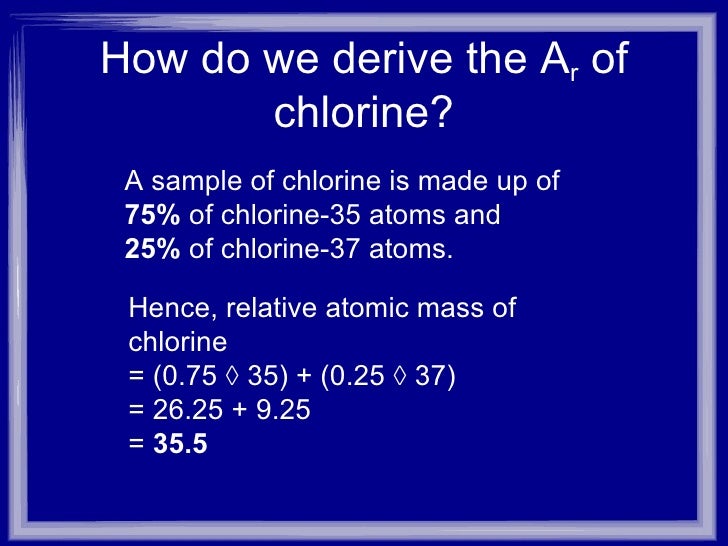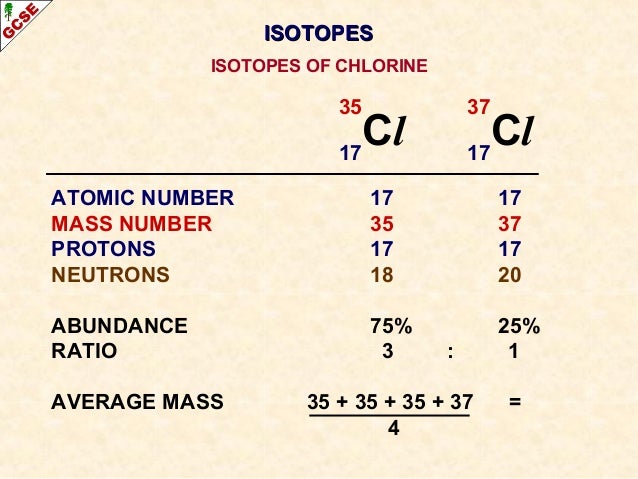The atomic weight of chlorine given on the periodic table is 35.47 u. Different isotopes have different relative abundances,chlorine – 35 has a relative abundance of 75.76%,whereas chlorine – 37 has a relative abundance of 24.24%. Chlorine -35 is about 3 times more abundant than chlorine – 37, the weighted average is closer to 35 than 37. Chlorine (Cl) Atomic Data for Chlorine (Cl) Atomic Number = 17 Atomic Weight = 35.4527 Reference E95: Isotope: Mass: Abundance: Spin: Mag Moment: 35 Cl: 34.968852: 75.77%: 3/2 +0.82187: 37 Cl: 36.965903: 24.23%: 3/2 +0.68412: Cl I Ground State 1s 2 2s 2 2p 6 3s 2 3p 5 2 P. Atomic mass of Chlorine is 35.453 u. Note that, each element may contain more isotopes, therefore this resulting atomic mass is calculated from naturally-occuring isotopes and their abundance. The unit of measure for mass is the atomic mass unit (amu). One atomic mass unit is equal to 1.66 x 10 -24 grams.
Molar mass of KCl = 74.5513 g/mol
This compound is also known as Potassium Chloride.
- Naturally occurring chlorine is 75.78% 35 Cl, which has an atomic mass of 34.969 amu, and 24.22% 37 Cl, which has an atomic mass of 36.966 amu. Calculate the average atomic mass (that is, the atomic weight) of chlorine.
- In 1961, the Commission recommended Ar (Cl) = 35.453 (1), based on the atomic weight of silver and on Ag/AgCl equivalent ratios determined chemically by many well-known authorities.
Convert grams KCl to moles or moles KCl to grams
Molecular weight calculation:
39.0983 + 35.453
| Symbol | # of Atoms | Chlorine | Cl | 35.453 | 1 | 47.555% | |
| Potassium | K | 39.0983 | 1 | 52.445% |

Cl Atomic Mass Number

In chemistry, the formula weight is a quantity computed by multiplying the atomic weight (in atomic mass units) of each element in a chemical formula by the number of atoms of that element present in the formula, then adding all of these products together.
Formula weights are especially useful in determining the relative weights of reagents and products in a chemical reaction. These relative weights computed from the chemical equation are sometimes called equation weights.

The atomic weights used on this site come from NIST, the National Institute of Standards and Technology. We use the most common isotopes. This is how to calculate molar mass (average molecular weight), which is based on isotropically weighted averages. This is not the same as molecular mass, which is the mass of a single molecule of well-defined isotopes. For bulk stoichiometric calculations, we are usually determining molar mass, which may also be called standard atomic weight or average atomic mass.
If the formula used in calculating molar mass is the molecular formula, the formula weight computed is the molecular weight. The percentage by weight of any atom or group of atoms in a compound can be computed by dividing the total weight of the atom (or group of atoms) in the formula by the formula weight and multiplying by 100.
A common request on this site is to convert grams to moles. To complete this calculation, you have to know what substance you are trying to convert. The reason is that the molar mass of the substance affects the conversion. This site explains how to find molar mass.
Finding molar mass starts with units of grams per mole (g/mol). When calculating molecular weight of a chemical compound, it tells us how many grams are in one mole of that substance. The formula weight is simply the weight in atomic mass units of all the atoms in a given formula.

Cl 37 Atomic Mass
Using the chemical formula of the compound and the periodic table of elements, we can add up the atomic weights and calculate molecular weight of the substance.
